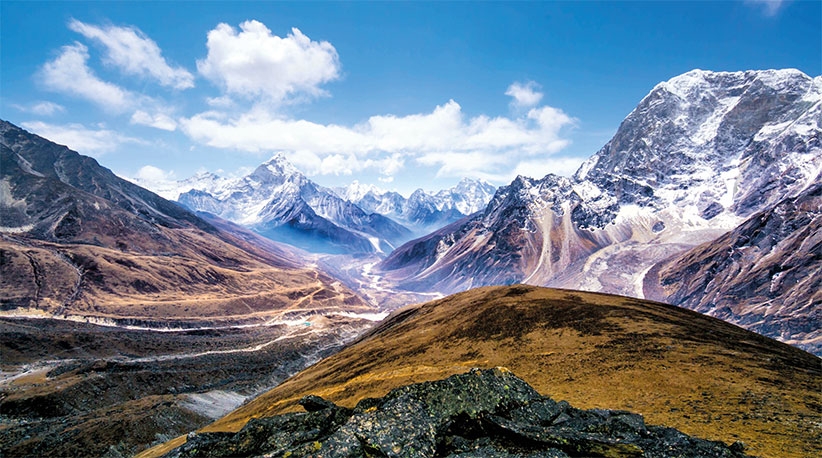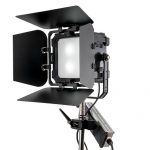
Play The Stock Market
Stock footage can be a way to cut costs on difficult-to-achieve sequences, while there’s also the option to sell clips to boost finances, writes Pro Moviemaker’s Krishan Parmar and Terry Hope.
If you’re a creative filmmaker who takes pride in the originality of your production, would you deem it something of a personal failure to be using stock sequences alongside your own footage, or would you be more pragmatic and consider the potential benefits? If it’s the latter then you most certainly won’t be alone: more filmmakers than you might realise, even those working on high-profile productions, are looking to stock as a way of solving various issues that arise when budget is a priority.
So in what circumstances might stock come riding to the rescue? Well, consider such things as a wide establishing shot of an iconic landmark, such as the Eiffel Tower or the Statue of Liberty, that firmly places the action in a particular city. The cost of travelling to such a place and clearing all the necessary licences could be huge, whereas a decent stock library will have dozens of options for you, including air-to-air shots that would have ratcheted up the challenges and your costs still higher.
Then there are the dramatic moments in a film that are full of impact but hugely costly to stage, such as a car crash, a building on fire or an explosion. These too can be sourced quite easily through stock, as can complicated time-lapse sequences that would take an age plus a fair amount of specialist knowledge and experience to put together yourself. Buy something off the shelf that ticks all the boxes and then take care in the grade to match it to the look you have for the rest of the footage, and you could be saving a huge amount of time, effort and expense, while gifting your film production values that might be way beyond what you could otherwise afford.
“Think about whether you’re going to make use of stock options from the very start of your production,” says Kyle Trotter, director of creative video content at Shutterstock in Toronto, Canada, “and then factor this into your budget. We’ve got nine million video clips in our collection, so there’s a lot of material to choose from and a good chance that we’ll have what you want. And by using stock to provide some of the more expensive and time-consuming sequences you’ll be able to put your budget towards other things, such as maybe another day with your actors.”


Making use of stock footage for expensive sequences will enable you to spend more budget on the meat of your production.

“Think about whether you’re going to make use of stock options from the very start”
Impressive Sequences
In an age when production values are continually rising while the pressure on budgets is unrelenting, stock is one way of adding impressive sequences to your film that would otherwise be unachievable. However, you need to have a clear idea from the outset about how you plan to use stock and the grade you’re using for the rest of the footage. One thing that has changed in recent times is the idea that you’re stuck with the look of the footage that you might buy in. These days agencies specialise not just in a comprehensive variety of shooting styles, but they also supply sophisticated editing tools that can bring your purchased clips closer to your personal vision.
RocketStock by Shutterstock is the home of a number of video packs that cost between $79 and $199, and these enable a number of different effects to be added to footage. Abyss, for example, delivers 169 different wave, splash and ripple effects, while Submerge comes with 130 water and rain effects. And so it goes on: Lucent Ultra comes with 260 vivid lens flares in 4K, and Lucent Warm provides 140 more. Burn has 200-plus fire effects, Collapse comes with 80 debris effects, Ricochet 450-plus muzzle flash and gun smoke effects, and Mojave 100 dust effects. There’s even a pack called Tidal that delivers 100 different transitions, so it’s an easy entry point into editing that can give the filmmaker extra bang for their buck when they’re buying a clip.
There are also regular ‘freebies’ to give editors a flavour of what they can achieve, including such things as space background elements, light and dust overlays, LUTs for colour grading, a wedding titles and light leak pack, and a retro realistic distorted VHS effect should you want to simulate vintage footage. It’s all part of the extra mile that stock libraries know they have to travel in order to encourage filmmakers to use their services, and it’s designed to provide the ultimate in flexibility, and to extend still further the scope of the available clips.
Videoblocks, part of Storyblocks, is another big library that’s enjoying a boom as filmmakers become more ambitious in terms of what they are looking to achieve. CEO TJ Leonard points out that it could be impossibly expensive for a small production to film such things as a skyline shot in Shanghai or underwater clips of manta rays, but other filmmakers will have just that clip and it could be very cost effective to acquire and drop in.
“Stock footage allows you to save on production costs without compromising your vision,” he says. “Save your time and budget for the important custom scenes you need to pull your film together by using stock footage to fill in some of the gaps or to get some of the expensive shots. Think about how much it costs to rent or buy the right equipment, find the right operator, file the right permits, and get the right permissions to film that aerial shot of New York City at night. Think about how long it takes – all just for one shot in one scene. Your precious resources are better spent going towards the meat of your project.”


Modern stock footage can often be tweaked and graded in a number of ways to suit the look of your production.

“It’s designed to provide the ultimate in flexibility and extend the scope of available clips”
Depending on the look you’re trying to match it’s possible to search certain keywords in Videoblocks’ member library to find the right footage. Something like aerial footage is obvious enough, but if you’re looking for specific lighting, that could be a little more challenging. However, once you find a clip that matches the look you want you can then use tags from the contributor to find clips from the same shoot, so you’ll be able to source more content that has a similar aesthetic.
As with Shutterstock, the facility is provided to customise stock material, to blend it with your brand or film’s look. From adding colour gradients to blurring backgrounds, there’s plenty that can be done to customise stock footage so that it suits your project’s needs. There’s green screen footage, mock-up templates, lower thirds effects, smoke and fire, and numerous other visual effects available with Storyblocks’ subscription, plus free tutorials on the company’s blog.

“If you’ve got a niche then so much the better, but it’s crucial you have great production values”

Sell Your Own Stock
Obviously the whole issue of stock is double-edged, and just as you might look to buy in clips that would cost a fortune to produce you can also look to offset the cost of expensive shoots by selling footage from your main shoot, B-roll or personal shoots. It’s a case of getting into the right mindset: you might well already have material on file that would be of interest to others, and you simply need to get into the habit of looking this out and offering it for sale.
“The first thing you need to ask is what kind of stock would you be looking for yourself,” says Kyle Trotter. “If you’ve got a niche that you specialise in then so much the better, but it’s crucial that you have great production values and that your footage is all shot at 4K if not higher. The better the quality, the more something will stand out.
“The kind of subject needs to be something that someone else couldn’t easily produce, otherwise why wouldn’t they just shoot the sequence themselves? In theory, however, everything can be stock, and there will always be someone looking for something, even if it’s quite obscure. Make sure that you have tied up the rights to everything you use, because if you don’t own it you can’t sell it.”
At Videoblocks there has been a steady rise in the amount of 4K footage held, which currently stands at more than three million clips, and supplying material at this resolution or above helps to future-proof portfolios to an extent.
“To submit material you need to sign up, upload your content, add descriptive titles and relevant keywords so that customers can find your content, and then you submit your files to our review team,” says T J Leonard. “Once the clips have been approved they’ll be available in our marketplace for customers to purchase. Clips should be around 20 to 30 seconds long and at least 1080p in resolution.
“Authentic lifestyle clips are always in high demand, while members are also looking for high production value shots like city aerials, nature time-lapses and slow motion. However, everyone trying to shoot the same content can saturate areas. Shoot what you’re best at or what you enjoy most, and don’t be afraid to create a niche.”
Those looking for inspiration can check out Videoblocks’ 2018 trends, which is full of information about what users are searching for on the site. The company also shares information about what its members want through its contributor newsletter and the creators section of its blog. Most libraries will be only too happy to share the same information since it’s very much in their interests to do so, so take a look around online and do your research, and you’ll find plenty of information that will help you produce footage that others want to buy.
>>More Information










